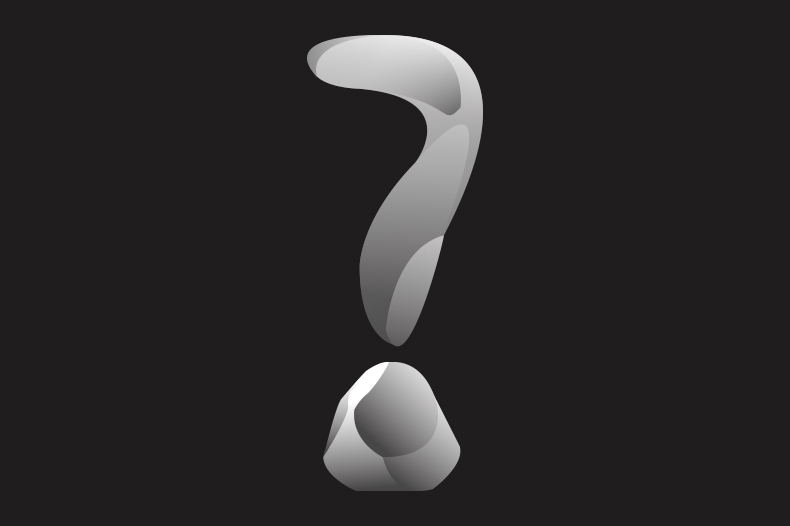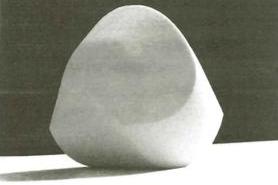Firm guidance on “wobble” questions
Luke Portnow is keen to see how a Supreme Court decision will be deployed. C-237/19, Gömböc Kutató, Szolgáltató és Kereskedelmi Kft v Szellemi Tulajdon Nemzeti Hivatala, CJEU, 23rd April 2020

April saw the CJEU revisit the issue of the registrability of 3D shape marks. In answer to questions referred by the Hungarian Supreme Court, we have been given welcome clarifications on how the aesthetic and technical functionality of 3D shape marks should be assessed when determining registrability.
Engineering oddity

In 2015, Gömböc Kutató, Szolgáltató és Kereskedelmi Kft (Gömböc) applied to register the sign shown below in classes 14, 21 and 28 (decorative items, crystal ware and chinaware, toys). The shape was created by two Hungarian engineers and is the first known homogenous object with only two points of equilibrium. Lacking a counterweight, it always returns to its initial position on a horizontal surface. In other words, it “wobbles around” and then returns to its original position.
Examination of the application by the Hungarian IPO, at that time, mirrored Article 3 of the EU Directive 2008/95 (now Article 4 of EU Directive 2015/2436), which deals with absolute grounds of refusal.
Registration is prohibited under Article 4(e) for signs which consist exclusively of: (i) the shape, or another characteristic, which results from the nature of the goods themselves; (ii) the shape, or another characteristic, of goods which is necessary to obtain a technical result; and (iii) the shape, or another characteristic, which gives substantial value to the goods.
The Hungarian IPO refused registration for the goods in class 28 on the basis of point (ii) and in classes 21 and 14 on the basis of point (iii). It focused on evidence relating to Gömböc’s website, the publicity the product had received and how this would be perceived by the average consumer. Put simply: for toys, the shape was deemed necessary to obtain a technical result, as it allowed it to function as a toy, always returning to its point of stable equilibrium. For the decorative goods, the shape was a “striking and attractive shape, deemed an essential element in the marketing of the goods in question”, giving substantial value. The Hungarian IPO found that consumers buy decorative items mainly for their shape.
Gömböc appealed all the way to the Hungarian Supreme Court, at which point the CJEU was asked questions which can be summarised as:
- In determining whether a shape is necessary to obtain the technical result, do we rely only on its graphic representation in the application, or can the perception of the relevant public also be taken into account?
- Do we determine that a 3D mark should be refused registration because its shape alone gives substantial value to the goods, only by taking into account the perception or knowledge of the buyer, when looking at how the mark is graphically represented?
- Also, when assessing substantial value, do we automatically refuse registration if the sign already enjoys protection as a Registered Design, or only focus on the aesthetic appearance which gives the product a certain value?
The Hungarian referral highlighted some important issues in relation to examining solely on the basis of a trade mark’s representation. Should the perception of the relevant public be taken into particularly close consideration if the product has become well known? And what if additional information is needed, as the “technical result” cannot always be ascertained from the shape’s graphic representation on the application form?
CJEU decision
The introductory wording of the CJEU’s ruling appears to accept that its recent case law had not removed all doubt on how to assess registrability. And we now have some welcome clarity resulting from the CJEU’s answers (again provided in summary).
To establish whether a sign consists exclusively of the shape of goods necessary to obtain a technical result:
- assessment is not limited to graphic representation on the application form;
- this is a two-stage process in which the competent authority identifies the shape’s essential characteristics and then establishes whether they perform a technical function;
- to establish the essential characteristics of the sign, the perception of the relevant public can be used; and
- to ascertain whether a shape’s characteristics perform a technical function of the goods, other information may be used – but must only originate from “objective and reliable sources” (eg, not the average consumer, but experts and scientific publications, for example).
To determine that the shape alone gives substantial value to the goods:
- characteristics not connected to the shape (the technical function/qualities or reputation) must be irrelevant;
- following Hauck1, the perception of a sign by the average consumer can be used;
- the fact that a sign is the shape of a decorative item does not mean this ground of refusal should be automatically applied; and
- registration should be refused if it is apparent from objective and reliable evidence that the decision to purchase the product in question is determined by the essential characteristics of the shape.
The fact that a shape is protected as a Registered Design should not automatically attract a refusal, as “the legal regimes concerning the registration of designs and trade marks are independent, without any hierarchy”.
Going forward
The CJEU’s answers provide clarity that “technical function” and “substantial value” of shape marks should be considered, and relevant grounds for refusal raised, ultimately on an objective basis. It suggests that substantial value may be found in this case (in light of the perception and knowledge of the relevant public), in that the shape is the tangible symbol of a mathematic discovery.
After Hauck, and now this, it appears that pretty much anything can lend a shape substantial value. But at least we know how the sign will be examined to arrive at such a decision. It will be interesting to see how the Hungarian Supreme Court applies the CJEU’s answers.
1 C-205/13
Key points
- Technical function should be assessed from the perspective of relevant experts
- Registration should not be refused simply because a sign consists exclusively of the shape of a decorative item
- The existence of Registered Design protection is not fatal and does not prevent a shape from also obtaining protection as a trade mark






